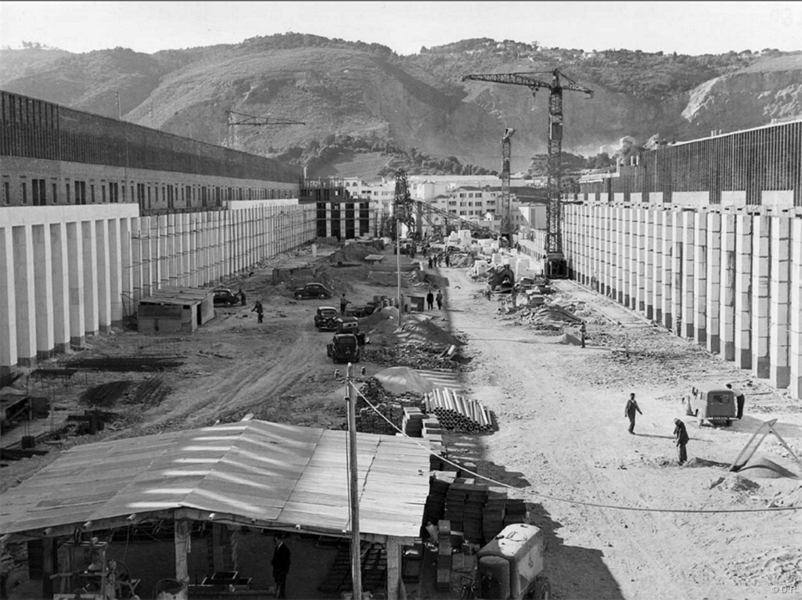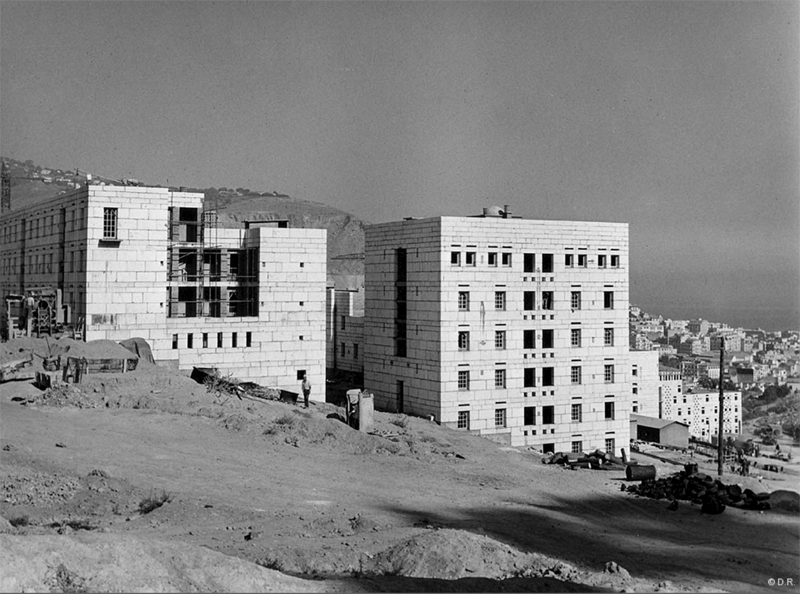
Fernand Pouillon – The Modern Master Builder
Vicente Nequinha
When we listen to classical music, even if it is inattentively, we can understand that there is a large number of musicians playing together with the common goal of creating a harmony. Each one of them has the responsibility to dominate the instrument and the music sheet. However, it is necessary that someone coordinates the […]

When we listen to classical music, even if it is inattentively, we can understand that there is a large number of musicians playing together with the common goal of creating a harmony. Each one of them has the responsibility to dominate the instrument and the music sheet. However, it is necessary that someone coordinates the whole orchestra; there can not be a violin playing a wrong note nor an oboe that is not on tempo. At the tip of the Maestro’s fingers, the leader of all the musicians, a Battuta is held. With it, he conducts the how and when of the orchestra‘s performance.
Just as in music, also in building is it possible to find a person who is in charge of a group of specialists and workers: the architect. Amongst the characteristics of the architect we can recognize the possibility, or the impossibility, of assuming the role of a master builder: the one who not only designs but also sees his designs through to their completion, taking the construction site under his responsibility.
The persona of a master builder was easily recognizable during the Middle Ages, where this character embodied the functions of the contractor, the mason, the engineer and the architect. Recognizing the master builder as a figure of prime importance, Fernand Pouillon writes the novel Les pierres sauvages, in which he describes the story of a character who faces all the difficulties of the living and working conditions in the Cistercian Abbey’s construction at the Le Thoronet, and in whom he recognizes himself, “I was applying my own character as it might have been within the context of such a magnificent architectural period.” 1
Pouillon was not interested in finding a theoretical discourse that could define his work, avoiding to seek a stylistic tendency – going against the spirit that fed the architects of his generation in the 1930s. “Pouillon was a modern architect, but he was not a modernist” 2, being far from architects’ meetings, such as the Congrès Internationaux d’Architecture Moderne (CIAM), to be focused on practical issues of architecture, and avoiding taking an ideological stance towards reality. It was this attitude that allowed him to develop some necessary assets, such as decision making and efficiency, that would later on allow him to act as he did. He acknowledged the act of building as a response to the homelessness as a need he felt passionate about.
His reputation as an architect was reinforced when he developed a lot of apartments in a tight schedule, in Aix-en-Provence, being responsible for all phases of the project, from urban design to architecture and construction. “Two hundred housing units at two hundred meters from the city, built in two hundred days, for two hundred million francs. (…) I planned the construction in cut stone, a Pouillon system of flooring, a Pouillon method of load-bearing brick walls, a Pouillon vaulted structure. This represented a housing development of simple invention, achieved at a cost as low as possible and within a schedule that nobody believed.” 3 This achievement convinced the newly elected mayor of Algiers, Jacques Chevallier, about his efficiency, leading him to invite Pouillon to be the Architecte en chef of the Algerian capital, where he was commissioned to design several large-scale housing developments.
Some years before his arrival to Algiers, Fernand Pouillon was responsible for the creation of the Société d’Etudes Techniques (SET) in France. This technical consulting office was in charge of the supervision of construction sites, time planning, and coordination between different constructors and entities, showing how the design, the development concerns and the construction can work together, testing the boundaries of the architect as an artist and inventor, the client as a developer and the general planer as a manager. With this model of a work process, Pouillon assured that the architect was able to coordinate all the design and construction stages.


The project Climat de France, in Algiers, was one of the most important commissions for Fernand Pouillon. During the 1950s, the French government started several social housing initiatives in response to the decadent social climate present in the North African colonial territories, Pouillon being in charge of one of the largest housing projects constructed in North Africa at that moment. Situated at a high point of the Frais Vallon Valley in the Algerian capital, Pouillon developed a “gridded” urban proposal, challenging the strong inclination of the site. Combining a variety of small and large buildings, it explored different dwelling typologies in order to understand and give a proper answer to the particularities of the cultural demands –in this case, the Muslim Northern African context.
One of the most peculiar elements of this project is a rectangular housing block that defies the limits between the monumental and domestic scales. This “scale’s game” is easily perceived in the contrast of the closed character of the outer facade and the impressive colonnade in the inner courtyard composed of 200 columns – giving the building the name “200 Colonnes”. A strategy used by Pouillon to emphasize the cohesion among all the buildings involved in the project, was an attentive choice and use of materials, opting for a system of modular stone panels, conceived by him, to cover the walls of the buildings and, at the same time, to give the modest construction a certain air of grandeur.
The particularity of his approach towards this commission was the fact that he did not face it as just a designer, “More and more I started to orient myself towards rapid and economic construction. I elaborated a method, a technique. I reworked the organisation of the construction process in order to make it more rational. I had to solve three problems: prices, deadlines, comfort (…). I was the first one to think simultaneously as an organiser, a financier, an engineer, an inventor and an artist.” 4 This attitude towards architecture becomes a work of coordination, just like as the Maestro and his orchestra. A capability to control all the stages of a project, from the design to its construction. For Pouillon, the most important role of an architect, as a master builder, is the capability to implement ideas and to find opportunities in the constraints that all projects present.
But how realistic is this master builder nowadays? It is difficult to compare the master builder of the Middle Ages and such a figure nowadays for different reasons; the cultural and social demands are not the same, as well as the construction techniques and tools. However, there is a critical understanding that we can recognize in this medieval character – besides his savoir-faire put at the service of a collective work, he had the desire to take complete control over the task at hand as a way to perceive what was being proposed. In Fernand Pouillon, we must recognize this attitude, not as result of nostalgia or admiration for an unachievable period, but as an intellectual capacity, as an architect, to critically understand how to operate in the reality that we are about to change.
“Supposing that one day, I would be miraculously recognised, a phenomenon which is yet to come, in the light of the influences, sensations and reflections that I will have inspired in the domain of art.” 5
1 Pouillon, Fernand, “Mémoires d’un architecte”, 1968, Éditions du Seuil, pag. 439, 4 pp.
2 Caruso, Adam and Thomas, Helen, “The Stones of Fernand Pouillon”, 2013, gta Verlag, pag. 6, 3 pp.
3 Pouillon, Fernand, “Mémoires d’un architecte”, 1968, Éditions du Seuil, pag. 141, 3 and 4 pp.
4 Pouillon, Fernand, “Mémoires d’un architecte”, 1968, Éditions du Seuil, pag. 78 and 102, 4 and 2 pp.
5 Pouillon, Fernand, “Mémoires d’un architecte”, 1968, Éditions du Seuil, pag. 306, 3 pp.